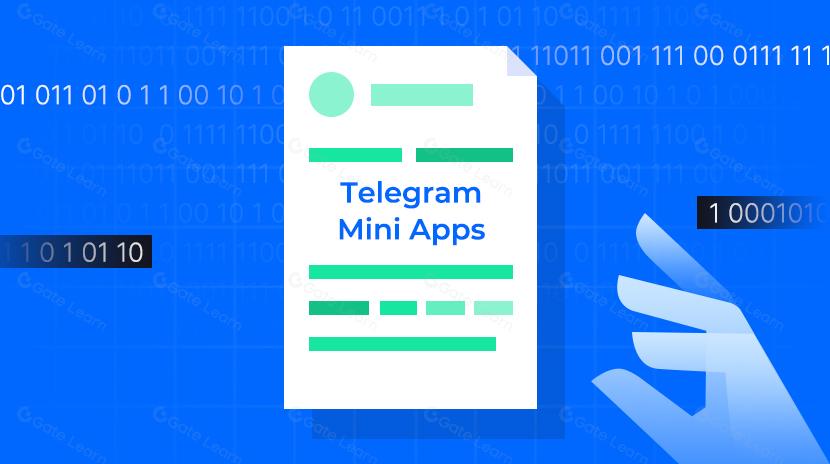نظرة عامة على العملة المستقرة USD1
إعادة توجيه العنوان الأصلي 'هل تدخل عائلة ترامب قطاع العملات المستقرة؟ نظرة عامة على عملة الستابلكوين الرئاسية USD1 على BSC'
شهدت نظام ال BSC النشط دائمًا موجة جديدة من الإثارة في وقت مبكر هذا الصباح. أطلق مشروع DeFi المدعوم من عائلة ترامب، World Liberty Financial (WLFI)، عملة مستقرة مرتبطة بالدولار تحمل اسم USD1 على نظام BSC. بعد إعادة تغريد الخبر من قبل CZ (تشانجبينج زاو)، قفزت المجتمع سريعًا على قطار الانطلاق، وأنشأت عملة بنفس الاسم دخلت على الفور في "وضع الامتصاص المالي".

نظرًا لانتشار الرموز الاحتيالية بنفس الاسم، أصدر كل من CZ وحساب WLFI الرسمي تحذيرات للمستخدمين، داعين إياهم إلى أخذ الحيطة وتجنب الوقوع ضحية للعمليات الاحتيالية. وفقًا لهذه التحذيرات، تراجع سعر USD1 بسرعة وانخفض بنسبة تزيد عن 50% من ذروتها في وقت الكتابة.

إجمالي العرض لـ USD1 يتجاوز 3.5 مليون دولار. وفقًا للبيانات من Etherscan و BscScan، قد أصدر المشروع عملة World Liberty Financial USD (USD1) في بداية مارس. أكد CZ أن عقد العملة المستقرة تم نشره على كل من سلسلة BNB وإيثيريوم، على الرغم من أنه حاليًا متاح فقط للاختبار من قبل عدد محدود من العناوين.

لماذا تستهدف WLFI العملات المستقرة؟
قد يكمن سبب استهداف WLFI لقطاع العملات المستقرة في مساره التنموي. منذ إطلاق بيعها الأولي للرمز المميز في أكتوبر من العام الماضي ، تهدف WLFI إلى أن تصبح "معيارا جديدا للتمويل اللامركزي" ، مما يعزز رؤيتها للمستثمرين في الولايات المتحدة والعالم. يعمل دونالد ترامب نفسه ك "كبير المدافعين عن العملات المشفرة" ، بينما يحمل أبناؤه الثلاثة ألقابا مثل "السفير" و "DeFi Visionary" ، مع كون هالة العائلة هي أعظم نقطة بيع للمشروع. ومع ذلك ، أدت الصعوبات في الجولة الأولية لجمع التبرعات وتصور WLFI على أنه "مشروع ميمي" إلى شكوك واسعة النطاق.
تزدهر مشاريع العملات المستقرة في كثير من الأحيان حتى خلال الأسواق الهابطة، مما يوفر لـ WLFI فرصًا ليس فقط للتداول والإقراض والسيولة ولكن أيضًا الإمكانية للحصول على عوائد طويلة الأمد كبيرة. بعد إطلاق USD1، يمكن أن يصبح نقطة دخول رئيسية لجذب الأموال من كل من المؤسسات والمستثمرين التجزئة، مما يساعد على التخلص من تسمية “مشروع الميمز” لدى WLFI والانتقال إلى كونه لاعبًا شرعيًا في مجال الديفي. وفقًا للبيانات من WLFIArtemis و Dune، زاد عدد محافظ العملات المستقرة النشطة بنسبة تزيد عن 50% بين فبراير 2024 وفبراير 2025. في مارس من هذا العام، تجاوز إجمالي قيمة سوق العملات المستقرة 230 مليار دولار، مع استمرار USDT و USDC في التحكم في السوق. من خلال دخول السوق في هذا التوقيت، قد يستفيد WLFI من الرياح السياسية المواتية لالتقاط حصة من السوق.

منذ انتخاب ترامب، أعرب مرارًا عن دعمه العلني لنمو العملات المشفرة، متعهدًا بتحويل الولايات المتحدة إلى "مركز عالمي للعملات المشفرة" وتأكيد سيطرة الدولار الأمريكي على الاقتصاد الرقمي. كوسيلة أساسية لتعريب الدولار، أصبحت العملات المستقرة نقطة تركيز سياسيًا بشكل طبيعي.
قراءة ذات صلة: “لماذا خسر سوق العملات المشفرة 900 مليار دولار بينما بلغت قيمة سقف العملات المستقرة رقمًا قياسيًا عاليًا”
انطلاق USD1 يتزامن مع فترة حرجة حيث يراجع الكونغرس الأمريكي قانون "توجيه وتمكين الابتكار في العملات المستقرة" (قانون العبقري). في 13 مارس، أقر الكونغرس مشروع القانون من لجنة البنوك بتصويت 18-6 وهو الآن في طريقه نحو التصويت الكامل في مجلس الشيوخ. هذه تعتبر خطوة هامة نحو أن يصبح القانون وتشير لأول مرة إلى حصول تصديق على تنظيم العملات المستقرة على مستوى لجنة المشرعين.
يتوقع بو هاينز، المدير التنفيذي للجنة المستشارين الرئاسية للأصول الرقمية، أن يكون المشروع القانوني جاهزًا لتوقيع ترامب بحلول يونيو. تتوقع كريستين سميث، الرئيس التنفيذي لجمعية البلوكتشين، أن يمر الكونغرس الأمريكي تشريعات تتعلق بالعملات المستقرة بحلول أغسطس 2025، مع اعتبار قانون العبقري كعامل رئيسي في هذه التقدم. إذا كان بإمكان WLFI تنقيح 1 دولارًا مبكرًا، فإن لديها القدرة ليس فقط على تحقيق الامتثال بسرعة بعد صدور القانون ولكن أيضًا على الاستفادة من تأثير ترامب لتأمين "قناة خضراء" تنظيمية.
ركوب الموجة أم "استيلاء" آخر من عائلة ترامب؟
منذ عاد ترامب إلى البيت الأبيض بصفته "الرئيس الذي يهتم بالعملات الرقمية"، أصبحت كل حركة يقوم بها ومشروع عائلته المدعوم، WLFI، مؤشرًا رئيسيًا للاتجاهات في مجال العملات الرقمية. بعد عودة CZ، شهدت بيئة BSC ارتفاعًا، مع ارتداد في أحجام التداول وعملات الميم المدفوعة بـ "التشويق بين الزوجين" التي أنشأت سوقًا نشطًا. في الوقت نفسه، ظلت العملات المستقرة في صليب الأضواء كـ "ملجأ آمن" خلال السوق الهابط. يجمع إطلاق WLFI لـ USD1 بين ثلاثة مزايا رئيسية — تأثير ترامب، وبيئة BSC المزدهرة، وجاذبية العملات المستقرة — مما يجعله حدثًا ذا شهرة عالية بشكل طبيعي.
على الرغم من أن التوقيت يبدو مثاليًا، إلا أن دخول WLFI إلى مجال العملات المستقرة لم يكن قرارًا فجائيًا بل كان استراتيجية مدروسة. فبالفعل، منذ 14 أكتوبر من العام الماضي، انضم ريتش تيو الرئيس التنفيذي السابق لشركة Paxos إلى WLFI كرئيس لعمليات العملات المستقرة والدفع، مما أثار تكهنات في السوق بخصوص طموح WLFI للمغامرة في قطاع العملات المستقرة.
في وقت لاحق، في 29 أكتوبر، استشهد Decrypt بمصادر تقول إن WLFI تخطط لتطوير عملتها المستقرة الخاصة. في ذلك الوقت، كان المشروع قد جمع بالفعل 14 مليون دولار من خلال بيع رمزه الابتدائي، على الرغم من أن المنتج لا يزال يتطلب تحسينًا إضافيًا لضمان الأمان.
في 13 مارس من هذا العام، أفادت بلومبرغ بأن WLFI كانت في محادثات سرية مع بينانس. كشف أربعة مصادر مطلعة على المسألة أن الطرفين ناقشا إمكانية تطوير عملة مستقرة مرتبطة بالدولار الأمريكي بشكل مشترك. على الرغم من عدم الكشف عن تفاصيل المفاوضات، يبدو أن قرار إطلاق USD1 على BSC الآن يتوافق تمامًا مع هذه المناقشات السابقة.
بينما لا يزال بإمكانك التداول بالدولار الأمريكي 1، يثور بالفعل التكهن حول ما إذا كان هذا هو اختطاف نقدي آخر بنمط ترامب. على كل حال، تم تقليب السوق العملات الرقمية هذا العام بواسطة تعريفات ترامب، وتلاعب بالعملات الميمو، وبيع بعد الاندفاع. قبل يومين فقط، حث بشدة على عملته $TRUMP، معلنًا: 'أنا أحب $TRUMP - رائع جداً!!! أعظمهم جميعاً!!!!!!!!!!!!!!!!' ومع ذلك، بدت السوق غير معجبة هذه المرة، حيث ارتفعت عملة $TRUMP فقط بنسبة حوالي 12% قبل أن تتراجع بسرعة.

قراءة ذات صلة: “هل ترامب لا يزال جيدًا للعملات المشفرة؟”
فيما يتعلق ب 1 دولار أمريكي نفسه، هل آلية الضمان شفافة؟ متى سيتم إصدار تقرير التدقيق؟ تظل هذه التفاصيل الحرجة غير معلنة. علاوة على ذلك، كانت مخاوف بشأن مصالح WLFI المالية وتحويلات الفوائد ذات الصلة موضوع جدل مستمر. منذ إطلاق منصة WLFI في سبتمبر 2024، بقيت العديد من تفاصيل التشغيل غير واضحة. وفقًا لموقعه الرسمي، يمتلك ترامب وأفراد عائلته معينين بشكل جماعي 60% من حقوق الملكية في الشركة. حتى 14 مارس، كان قد أتم المشروع بيع عملتين رقميتين عامتين، حصلتا على مجموع قدره 550 مليون دولار. وفقًا لوثائق إصدار بيع عملة World Liberty الأولية، سيتلقى ترامب وشركته المرتبطة DT Marks DEFI LLC 75% من الدخل الصافي كرسوم - وهي 390 مليون دولار من الأرباح المذهلة.
قد يكمن السؤال الأكبر في دوافع ترامب الحقيقية. هل موقفه المؤيد للعملات المشفرة يعزز بصدق تطوير الصناعة ، أم أنها استراتيجية لتعظيم ثروة الأسرة من خلال استغلال قطاع التشفير؟ يبقى أن نرى ما إذا كان بإمكان WLFI التحرر من الاتهامات بأنها "انتزاع نقدي" ووصمة "مشروع ميمي" لتصبح منشئا حقيقيا في مساحة DeFi. في النهاية ، الوقت فقط هو الذي سيخبرنا.
تنصل:
يتم استنساخ هذا المقال من [ BlockBeats]. إعادة توجيه العنوان الأصلي 'هل تدخل عائلة ترامب قطاع العملات المستقرة؟ نظرة عامة على العملة المستقرة 'الرئاسية' USD1 على BSC '. حقوق الطبع والنشر تنتمي إلى الكاتب الأصلي [Ashleyإذا كان لديك أي اعتراضات على إعادة النشر، يرجى الاتصال بالبوابة تعلمالفريق، وسيقوم الفريق بالتعامل معه في أقرب وقت ممكن وفقًا للإجراءات ذات الصلة.
تنويه: تعبر الآراء والآراء المعبر عنها في هذه المقالة فقط عن آراء الكاتب الشخصية ولا تشكل أي نصيحة استثمارية.
يتم ترجمة النسخ الأخرى من المقال بفريق Gate Learn ولا يتم ذكرها فيGate.com, قد لا يتم تكرار المقال المترجم أو توزيعه أو نسخه.
المقالات ذات الصلة

أفضل 10 شركات لتعدين البيتكوين

ما هي العملات المستقرة (Stablecoins)؟

بوابة البحث: استعراض سوق العملات المشفرة لعام 2024 وتوقعات الاتجاه لعام 2025

دليل لوزارة الكفاءة الحكومية (DOGE)

ما هو USDe؟ كشف أساليب الربح المتعددة لـ USDe
